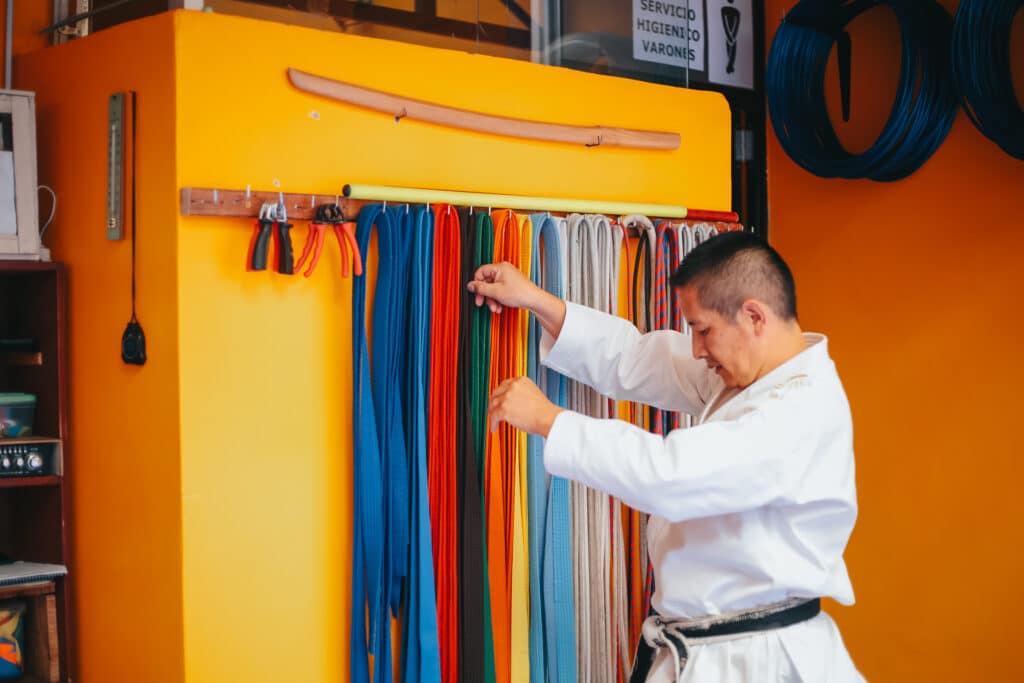
Do kung fu belts matter? Before we discuss that though I thought you should first educate yourself about martial art belts because I believe before even having an opinion you need to understand them better.
Martial art belts are often seen as a sign of mastery or prestige in the martial arts community. Some belts can even fetch high prices on the secondary market.
But what do these coveted belts actually mean? And how important are they to a martial artist’s training? In this article, we will explore the history, purpose, and importance of martial art belts.
Finally, you’ll discover why belts are or are not important for any martial artist. (And you decide if they are important!)
A Look At Martial Art Belt Systems
This was one of the sites I researched about martial art belts I also read articles from about half a dozen other websites. I believe this information is accurate. If not let me know in the comments section and I’ll make changes.
Belts of various colors (or obi, as they are known in Japan) are frequently worn by martial artists. Each one represents a new level of achievement in a student’s academic career.
In several martial arts, the rank of 10th kyu can go from low to high (10th dan). To become a black belt, a learner must first achieve kyu level, the highest possible rank (1st dan).
As a result, they begin their rise to the 10th dan rank.
Dr. Jigoro Kano, in the early 1880s, introduced the kyu/dan system and the use of a belt to indicate rank. The current art of judo may be traced back to the Japanese martial art of jujutsu, which was practiced by Kano.
Many other combat arts, including karate and taekwondo, adopted the belt ranking system soon after Kano formed his school, the Kodokan Judo Institute.
From there, the belts progressed until they became the modern variety with varying hues.
Outside of Japan, you can find variants of these belts in arts like Brazilian jiu-jitsu. Many kung fu kwoons began utilizing color-coded sashes in the 1970s, while some Muay Thai dojos use colored armbands to indicate belt ranks.
While in many martial arts a practitioner’s rank is indicated by the color of their belt, armband, or sash, this isn’t always consistent between disciplines.
The belts used in martial arts need a closer examination, so let’s do just that.
Karate Belts Rank System
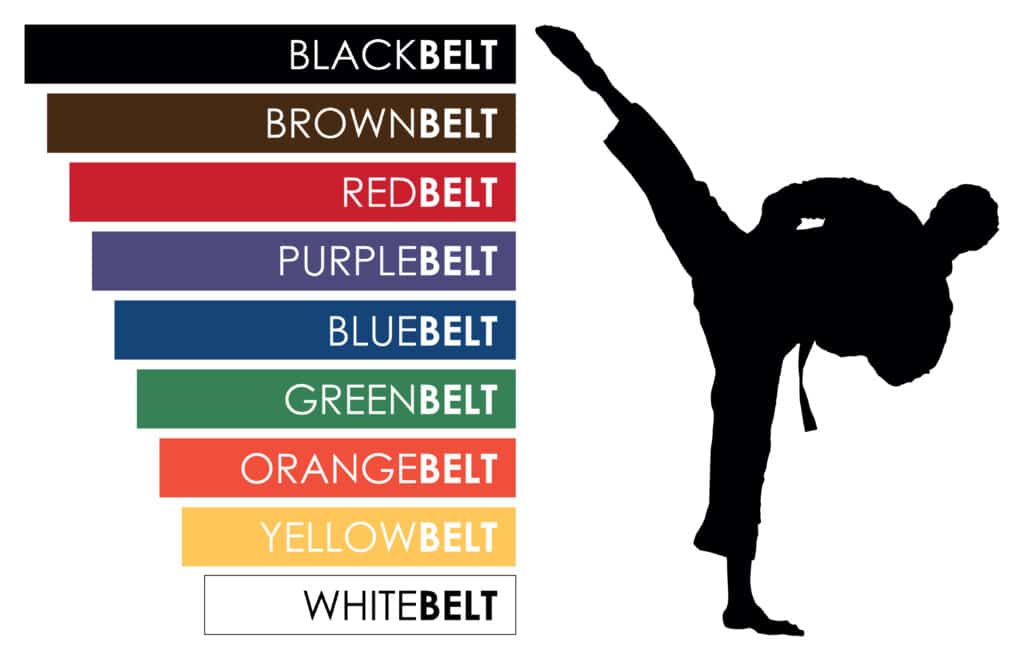
One of the most unique and interesting aspects of the martial art of karate is its belt rank system. Unlike other martial arts, karate does not have a set number of belts that a practitioner can earn.
There are ten Kyu (colored belts) and ten Dan (black belts), but how many Kyu or Dan a person earns depends on the organization they belong to. Some organizations have up to ten Kyu, while others only have six.
The same is true for Dan ranks; some organizations have up to ten, while others only have six. The Kyu belt rank system is fairly straightforward. A person starts at 10th Kyu and works their way down to 1st Kyu.
Once they have reached 1st Kyu, they can attempt their test for their Shodan (1st-degree black belt). The Dan rank system is less straightforward. A person starts at the lowest Dan, a 1st Dan, and works their way up to 10th Dan, the highest.
Once they have reached 10th, Dan, they can test for their Nidan (2nd-degree black belt), and then continue to test up to the highest Dan, Shichidan. In the United States, a person who has been awarded a degree from one of the three International schools (Kukkiwon, WTF, and AKA) can qualify for a Dan rank.
Taekwondo Belts Rank System
The belt rank system starts with a white belt and progresses through different colors, culminating in a black belt. This system helps students measure their progress and allows them to see the tangible results of their hard work.
The belt rank system is also used to identify different levels of expertise, with each color representing a different level of mastery.
Aikido Belts Rank System
Following Kano’s original judo system, Aikido uses solely black and white belts to denote the progression from kyu to dan.
It is true, however, that certain Western institutions have adopted belt grading systems based on color. The exact sequence and number of belts vary from school to school, but all begin with white for beginners and culminate with black for masters.
Judo Belts Rank System
The martial art of judo was developed in Japan. The Japanese martial art of Judo, whose name translates to “gentle method,” is characterized by a focus on throws, joint locks, and chokes rather than punches and blows.
The International Judo Federation (IJF) has been in charge of regulating the sport since its inception in 1951.
Judokas have a belt ranking system with nine tiers (white, yellow, orange, green, blue, purple, brown, and black).
A judoka begins training at the white belt level and moves through the rankings by mastering the required skills.
When a student reaches ninth kyu (the third color level), they are eligible to take the test for promotion to shodan (“first degree”), which is a major milestone on the path to becoming a teacher.
Brazilian jiu-jitsu Belts Rank System

Brazilian jiu-jitsu is a martial art and combat sport that focuses on grappling and ground fighting. It was developed in Brazil in the early 20th century by Mitsuyo Maeda, a Japanese judoka who had trained in Kodokan judo.
Brazilian jiu-jitsu eventually came to be its own art through the experimentations, practices, and adaptations of Carlos Gracie and his brothers. Brazilian jiu-jitsu belt rank The ranking system in Brazilian jiu-jitsu is similar to judo, with the exception of the black belt ranks.
The rank system has a total of ten ranks, which are split into three degrees: white, blue, and red. Each rank is further split into two major levels, with the exception of the black belt.
There are different ways to be promoted (for example, a white belt can be promoted directly from the yellow belt). The ranking system was first introduced in 1934.
The system was revised in 1998, with the addition of a new colored belt (the purple belt). It has been further revised in 2009, with the addition of a purple and blue belt.
My understanding is if you are going to a good Brazilian Jiu-jitsu school, it’s insanely hard to get belt ranks.
Muay Thai Belts Rank System
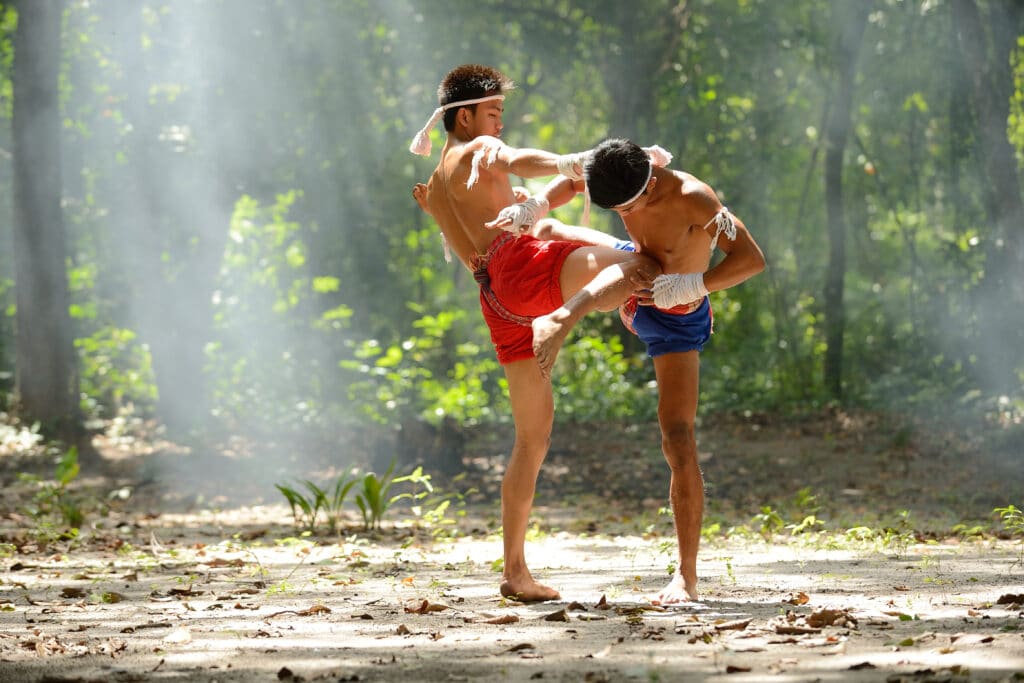
Because of the intense nature of Muay Thai training, it’s important to understand how to rank within the sport. The ranking system is essential for testing skills as well as competing against other athletes.
The grading system in Muay Thai is similar to that of traditional martial arts like karate and jiu-jitsu. When you start Muay Thai training at a gym, you will be given a white belt.
As you progress through your classes, your teacher will decide when it’s time for you to move up a rank by testing your skills in class or by having an outside judge observe your performance and award points based on their observations during sparring matches or pad work drills while wearing protective gear such as shin pads, wrist guards and headgear (if necessary).
Don’t quote me on this, but I think originally Muay Thai didn’t have a belt rank system. Rather it think it was determined by how well you did in the ring.
Kung Fu Belts Rank System
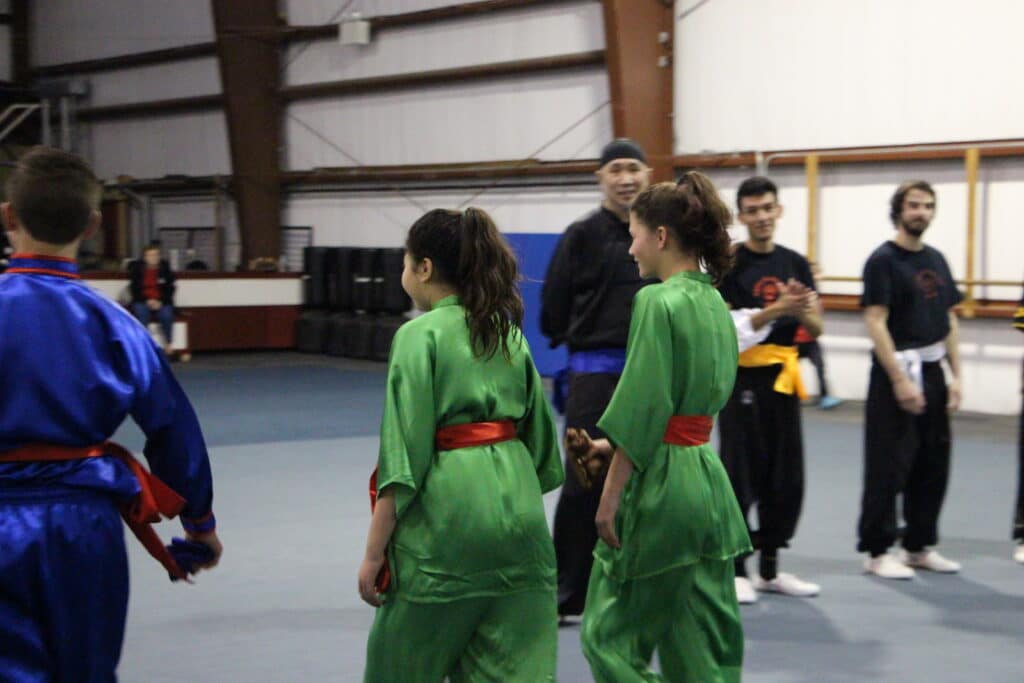
This is a difficult one to talk about because as anyone who has spent any time in the kung fu world knows there are differences between Shaolin kung fu belts in Wing Chun some schools have belts some schools don’t.
Wushu also has its own belt ranking system. Then there are different kung fu belts altogether for little know systems.
The Other Martial Arts Belts…
I am leaving out styles like Jun Fan Jeet Kune Do, which is a little different than some other Jeet Kune Do schools. You also have Krav Maga schools, Ninjitsu, and even more than that.
The focus of this article was first to make you aware of all the different types of belts or sashes depending on the style you are talking about.
Related Kung Fu Belts Questions
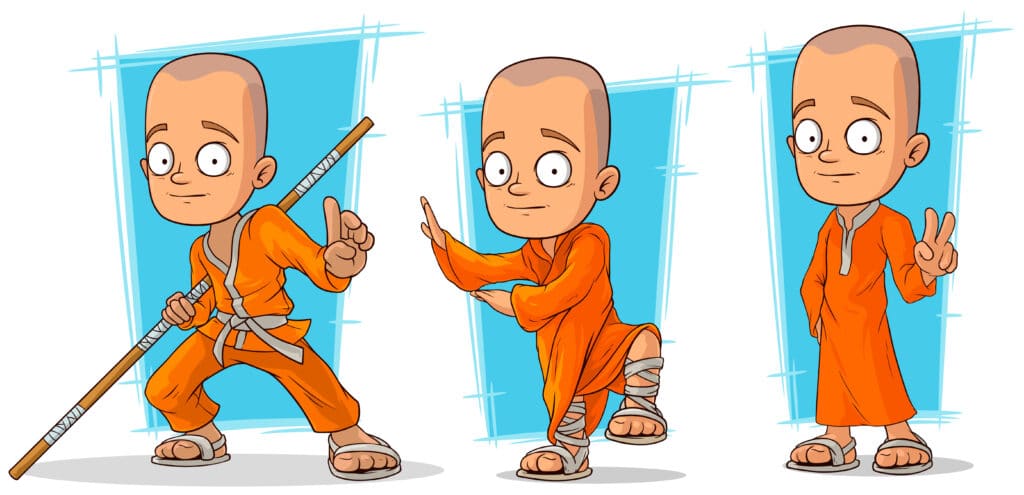
Does kung fu have belt ranks?
This depends on the school and who you ask. It really depends on the Sifu/Master who is teaching and their personal philosophy on martial arts.
Yes, some Kwoons have a kung fu belts system. Some don’t like the Kwoon I have been part of for 27 years. More on that a little later…
I’d also like to stress that there is no such thing as a kung fu black belt. If the school has a belt rank system they wouldn’t be called belts they would be called sashes.
This is also true for Wing Chun kung fu belts, they just don’t exist. They do have sashes though!
What is the order of belts in kung fu?
So this is something that I could write about extensively, however, I would ask you why do you want to know the answer to this question?
Let me know in the comments section.
Well, I don’t know how many belts in kung fu there really are or how the ranking system works, I do know that most kung fu kwoons have some sort of sash level.
But I personally never paid much attention to it. I’ll tell you why in a moment.
What is the best belt in kung fu?
The Black Sash would be considered the highest level in Wushu. In some schools, the head honcho wears a gold sash. Other styles like Wing Chun use unique sashes for different lineages.
My Opinion On Kung Fu Belts
I used to have a martial arts belt display when I was younger, and I remember having it. I’ll never forget the sense of accomplishment I received every time I acquired a new belt.
There is something to be said for having a positive self-image and being proud of the things you have accomplished in your life.
I didn’t find Sifu Phu’s Kwoon until much later in life, but when I did, I was eager to start training there and start earning my sashes. It said in his pamphlet:
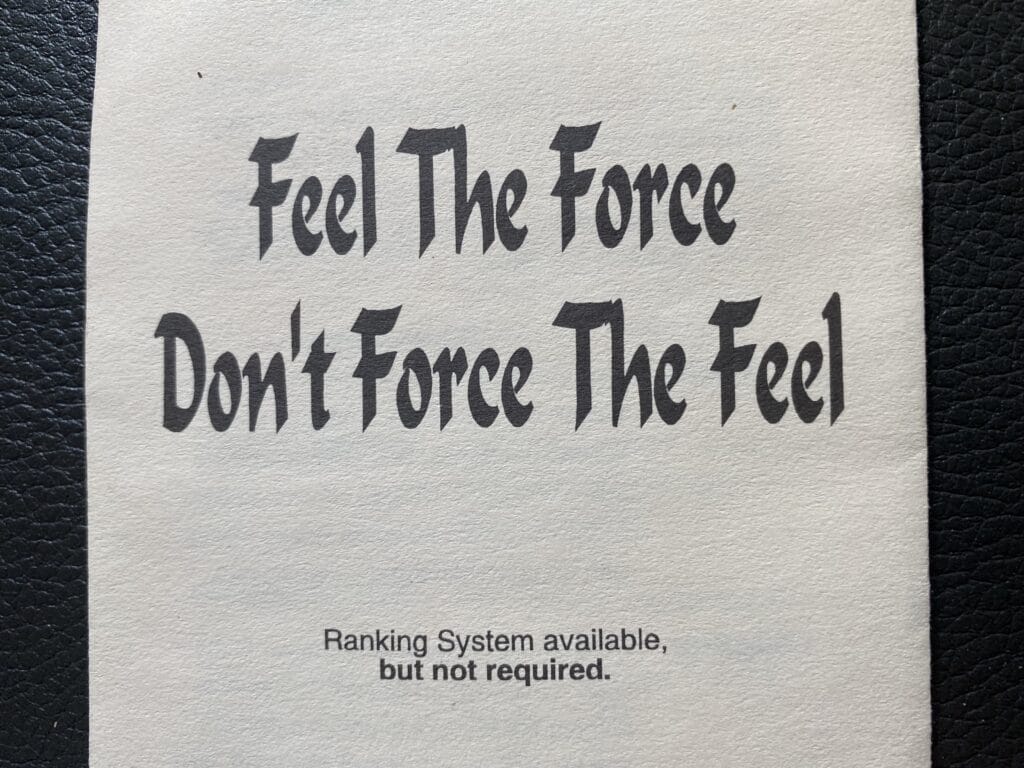
Looking at the pamphlet now, I didn’t catch on to the “But Not Required” part.
I Want My Kung Fu Belts Dang It!
So, after around five years of studying with Sifu Phu, I recall having a chat with him in his office about when I could start testing for my sashes. This took place after I had already achieved a certain level of proficiency in the art.
I intended to place them on the wall of a future school that I was seeing in my imagination at the time, which is why I was interested to know when I might start testing.
I wanted to put them on the wall of a future school.
He smiled at me and opened his filing cabinet. He pulled out a shiny crispy certificate of completion he then told me if I wanted one I could have it.
Keep in mind he said this to me in a snarky tone if that’s a thing. Some more years went by and eventually, I built my own kung fu Kwoon.
Literally, I built the building from the ground up. If you visit our YouTube channel that’s the building I built-in 2004. (Well the building contractors built it.)
Even after all of these years, I do not own a belt or a sash of any kind. I don’t have a certificate of completion for anything, therefore I can’t prove that I finished anything.
It’s not because Sifu wouldn’t give me one in the first place. This is due to the fact that I consistently trained for more than 30 hours a week for a number of years.
This is due to the fact that I was out validating and demonstrating my skill set. Simply put, I have lost interest in having one.
It’s because I ultimately realized that having a kung fu red belt or any color belt wouldn’t help me in a fight. While I see the value of kung fu belts and the value of having a belt ranking system.
My impression is that many schools in today’s society use them as door prizes. The majority of the belts, in my opinion, do not accurately reflect the degree of expertise and competence possessed by their holders.
However, I do feel that it has the potential to provide the learner with an erroneous sense of security and competence.
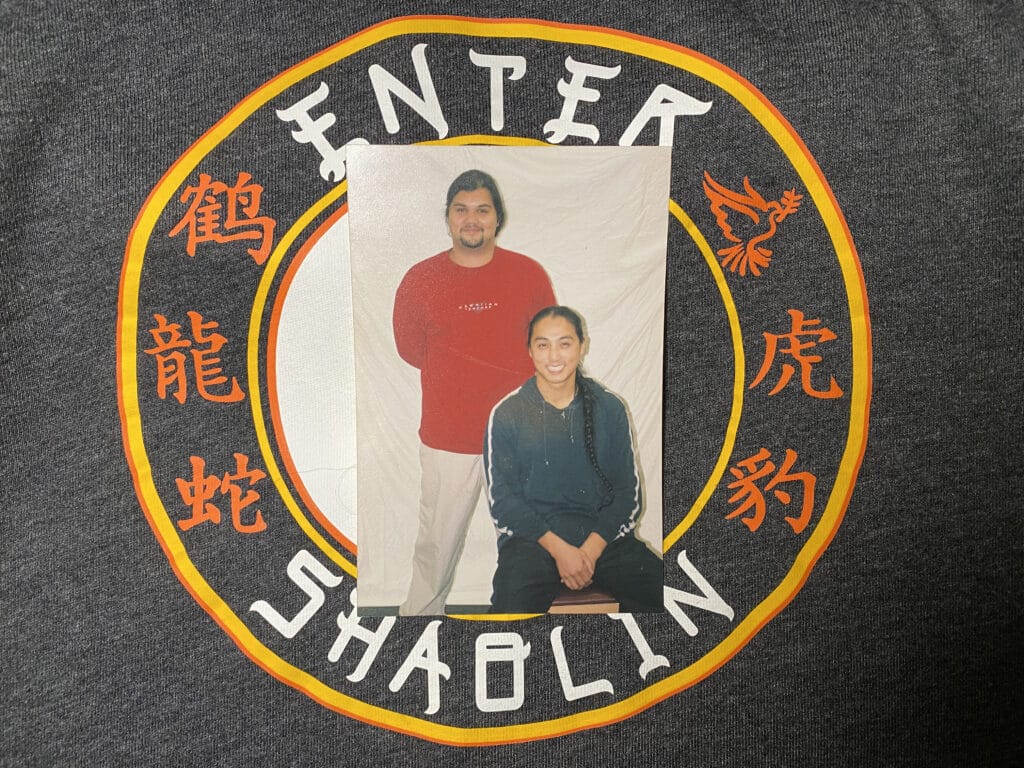
I actually asked Sifu Phu if I could start teaching when friends of mine I was training with for free insisted that I take their money.
These friends of mine came from different martial art backgrounds and all of us at the time had been training around the same time.
It was fun times, I was using mostly Wing Chun stuff in those days but I was sparring against a Brazilian Jujitsu student, Boxing student, Kickboxing student, and a brawler as the name suggests he just liked fighting.
For a few years, these guys came to my basement and we basically went at it testing out what worked for us and what didn’t. In those years I invited anyone who wanted to come over to my basement to train, spar, and share ideas.
Every time I came up against something I was struggling with I would work on it with Sifu Phu in my private lessons.
Eventually, I went from training with my good friends to them asking me to teach them because it got to a point where I was just teaching them how I was getting them all the time.
It wasn’t that my “style” of kung fu was better. It was the underlying Ngo Dac Na principles Sifu Phu taught me that made the difference.
When I asked Sifu if I had his permission to teach his martial arts he gave me his blessing. It took me about 10 years of training before I was able to start charging for lessons.
So while I understand why people might want kung fu belts or any martial art belt. Because when I got started on my journey I wanted one too. As I peeled away the layers of ego and pride out of my mind.
Peeling away your ego and pride is something you have to do if you want to excel at internal martial arts.
For me, martial arts were no longer about belts or sashes. Instead, martial arts simply became a way of being. Deep right?
Having a “belt” is by no means an indicator that you can survive a real fight. If you want a nice trophy or ornament for your wall then belts are cool.
If you ask me don’t worry about belt ranks or kung fu belts meanings. We have 2 sayings here at Enter Shaolin if you follow them you will find your martial truth.
- Feel The Force Don’t Force The Feel
- Don’t let style Define You, Let Energy Refine You
At the end of the day, there isn’t a right or wrong answer to this question. There are only opinions and everyone has one.

My name is Grandmaster Christopher Chandler I’m a grand master Tibetan Kung Fu over 25 years of teaching I have no students what can I do to get more students and get a building I was taught old old style to I’m hop gar lama Kung fu vary pond
Hrm, do you have any videos of you practicing your art?